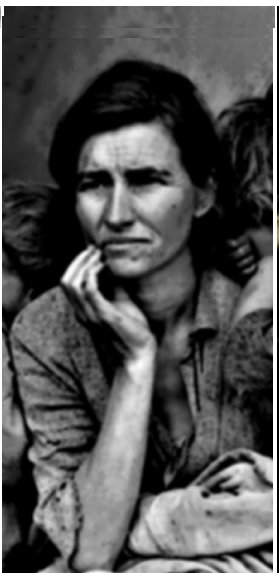Changes under three authorities Amy Huang
Born in 1885, Robert Glass Cleland was a history professor
at Occidental College
and also the author and editor of various books on California
and Mexico
history. His many books include The Irvine
Ranch of Orange County, 1810-1950, From
wilderness to empire: A history of California, and This reckless breed of men: The trappers and fur
traders of the Southwest. He passed away in 1957.
Southern California in the nineteenth century
could be considered one of the most fascinating and vivid eras in history. With
various periods of Indian, Spanish, Mexican, and American occupations, the
nineteenth century formed the historic foundation of many California
communities. From the Mexican War of 1846 to the Civil War, various events
struck Californios including a decrease in economic
standing, political authority, and social influence. Soon, with the flood of
Americans especially after the Gold Rush, Spanish-speaking inhabitants of California
were stripped of their authority over the existing state of affairs and
possession of vast regions of land. Through the Land Act of 1851 and land
surveys, Robert Glass Cleland explains how the United
States government had altered land
ownership, which took place during the American era during the years 1848 to
1880. Cleland¡¦s The Cattle on a Thousand Hills covers a brief, but
important period of time in Southern California from the
years 1850 to 1880 regarding the economic and social life in early California.
In the opening three chapters of the work, Cleland writes of California¡¦s
economic background and discusses the first major land grants put into effect
in 1784. According to Spanish laws, California
land not mission-owned could only be distributed to inválidos,
old presidio soldiers, according to their military service for the Spanish
Crown. Circumstances drastically changed under
the Mexican Republic,
where the government quickly assumed their task of presenting land grants in great
numbers, mostly in the hundreds, in contrary to the few thirty offered during
Spanish rule. Starting with the Secularization Act of 1833, the Mexican
Republic liberated the novice
population and transformed missions into parishes that served its local
residents. Cleland describes the increased growth of ranchos in the 1830s and
1840s and the causes of the critical blow to the old system from the Land Act
of 1851. The author also stresses the social and political changes during the
Mexican Era during the years between 1821 and 1848 that created further influences
on Southern California land. One of the most significant
events that occurred during this period was the secularization of Southern
California¡¦s vast land holdings and the expansion of profitable
trades. In 1846, a proclamation was issued that guaranteed Mexican citizens in California
that "persons holding title to
real estate or in quiet possession of lands under the color of right shall have
their titles and rights guaranteed them.¡¨1
The
effects of the Federal Land Act of 1851 proved to be devastating in Southern
California as many rancho owners faced poverty and deficiency in the pre-Gold
Rush era due to costly legal actions that followed the act. Cleland illustrates
life on the ranchos and he also portrays the great effect of numerous people
rushing to settle in California
during and after the great Gold Rush period. Cleland describes the abasements
of American Indians after mission land secularizations in great detail. Paucity
of investment and unstable interest rates persisted for countless years to
dishearten economic activities. Throughout his book, Cleland offers his
observations from various sources on life on the ranchos and fluxes in society.
He documents the rise of the cattle boom as the gold mining business fashioned
a rapid market for beef and the eventual disintegration of this sudden boom as
the market declined with a tumble. Swarms of immigrants poured into California
¡§[increasing] the demand for beef and [caused] cattle prices [to soar].¡¨2
However, it was the ¡§enormous profits from the cattle trade led to the downfall
of the Californios.¡¨3 Due to taxes,
usurious interests, numerous droughts, and countless epidemics, the ranchos
broke up. However, these events led the way towards a new economy that offered
the hope of a new social and economic order as sheep raising
became more profitable due to a great wool demand.
In
two of the eleven chapters of the work, Cleland also studies Governor Pedro Fages¡¦s, military governor
of Alta California during early Spanish rule, and many
others¡¦ land grants and also the ranchos era. According to the author, reasons
for the small number of grants were due to the lack of interest of wanted
applicants and also the existence of the missions. Abrupt increases in
populations brought about outrageously high prices and evidently insatiable
demands for cattle. Thus, this resulted in several cattle drives in Texas
and many other areas and eventually led to the exhaustion of Southern
California rancho herds. The rancheros often assumed obligations
containing unnecessary interest charges and when the cattle boom came to its
end abruptly, many rancheros faced inevitable bankruptcy. Destructive floods,
never ending droughts, ever hungry grasshoppers, and various other blights
forced their ways into the rancheros with disturbing results. Cattle owners
often drove their animals ¡§overland to northern markets facing many hazards and
dangers¡¨ where they encountered many problems including ¡§inclement weather,
inefficient herdsmen, stampedes, great gelds of mustard seed where animals were
lost, and the lack of grass.¡¨4
The latter part of the book includes a biography on Don Abel Stearns, a
wealthy landholder in Southern California, and the end
of an era. Following Stearns¡¦s movement through his life from the time he moved
to Los Angeles when it was still a
Mexican pueblo, a traditional community of Native Americans, from 1829 to his death in 1871, Cleland exemplifies
Stearns¡¦s success as the biggest landholder and wealthiest man in Southern
California and highlights his downfall caused by superfluous
taxations. When California became
an American state in 1849, Stearns had possession over a great amount of land
in the area and attained even more land from his debt-laden neighbors after the
cattle boom collapsed. He was recognized as ¡§the most important ranchero and
land owner in the south.¡¨5 However, due to
immense heavy taxes, Stearns ended up falling into the same trap of serious
debts and very small profits. For the latter part of the book, Cleland
discusses Stearns, who spent a great deal of his life in California which
almost covered the period of time from the Mexican Independence all the way
through the well-known Gold Rush and finally to the beginning of the Southern
California of our time. Because of his connection with many of the most
important families of the Spanish-Californians, including his marriage into the
prominent Bandini family, one of the ¡§most
influential rancheros and politicos in southern California,¡¨ and his once successful commerce relations with
newcomers, Don Abel Stearns was considered a personification of this period of change.6
Although Cleland focuses his work on the Los Angeles
area, the book is also a commentary on the troubles the entire state was
subjected to. He describes Southern California in its
conversion from a cattle frontier under previous Mexican rule and culture to an
American agricultural community due to much industrial and urban development.
His work is particularly informative on various matters including Indian
depredations, cattle migration, murders and obstructions, disorder, and
cautious deeds. Soon after the 1840s, the California
mission system laid in ruins. Examining
the effects of secularization, Cleland states that it "scattered the partly
civilized neophytes like sheep without a shepherd."7
He asserts that it was the Federal Land Act of 1851 itself and also the
federal actions pursuant to it that brought a large number of tribulations to California.
Cleland claims that California history should be examined in a nationwide
and even a worldwide perspective rather than in a strictly restricted setting.
Cleland affirms that "the Californians enjoyed a pastoral,
patriarchal, almost Arcadian existence."8
Because of the 1861 floods that reached a degree "unknown to the
oldest inhabitant," the cattle market collapsed and disappeared from Northern
California, and the chapules romantic period came to a halt.9 By 1864, the
majority of Spanish-Americans had already been forced to advertise their lands
to meet daily living expenses and to pay ever rising taxes. Cleland states that
"reduced by mounting debts and unpaid taxes to the condition of a
'devastated grain field,' the little that was left of their once lordly estates
passed forever into alien hands."10 However, Cleland's views on California are rather indecisive. In one aspect, he
regards California as a state that did not adhere to any
standard or ordinary patterns while in another aspect, he believes it to be
essentially a true slice of the United States.
Categorized under progressive historiography, Cleland¡¦s The Cattle on
a Thousand Hills, Southern California,
1850-1880 stresses the importance of California
as it was previously governed by three different authorities: Spanish, Mexican,
and American. Progressive historians emphasize the variations among opposing
classes, groups, and sections. In Cleland¡¦s case, the Spanish first had control
over the California land and it
was soon taken over by Mexicans. Later on, California
became an American territory and then one of fifty united states. The
American society is classified as an arena for opposing social and economic
forces. At first, one gained control, then the other, and the cycle repeated
itself as the two forces replaced one another. A dominant theme in progressive
historiography was conflict. Noticeably distinct turning points marked the rise
of one group and the overthrow of the other. California¡¦s
occupation by three different countries caused it to receive many influences
such as Spanish-speaking inhabitants called Californios.
Much of California¡¦s culture is
influenced by the Spanish and Mexico
with rancheros, vaqueros, and rodeos. During that time ¡§life on the ranchos is
described as a carryover en toto from the earlier regime, with techniques and
vocabulary that would soon become the habits and lingo of the American
cattlemen of the open range.¡¨11
Clifford M. Zierer, a professor emeritus of the
University of California,
Los Angeles, from the Geographical Review, compliments
Cleland¡¦s work saying that ¡§extensive footnotes provide the inquisitive reader
with supplementary information and references but leave the text uncluttered
for the general reader.¡¨12 Cleland¡¦s work easy
to understand, but at the same time contains a large amount of information
because he utilizes ¡§numerous other manuscript materials and secondary
sources¡Kfor descriptive details.¡¨13 Furthermore,
¡§the book should provide a stimulus to others interested in delving deeply into
the history of an extraordinary area.¡¨14
John Walton Caughey, managing and associate editor
of the Pacific Historical Review, from
The Mississippi Valley Historical Review,
reports that Cleland¡¦s book is especially informative on the various matters
discussed in his writing. However, he claims that the ¡§printing is marred by an
undue number of error in detail, none of which, however, alters the validity of
the general picture presented.¡¨15 Caughey describes Cleland¡¦s book as ¡§without a peer as a
broad, rich, specific, and authenticated description of southern California
in transition.¡¨16 When compared to William
B. Rice¡¦s, author of The Los Angeles Star,
Cleland¡¦s writing is ¡§much more restricted as to topic and time span.¡¨17 However, it is agreed that the book
deserves to be kept in print for everyone¡¦s use and interest.
Cleland¡¦s work is established in a distinguished clear and eloquent style.
The book is particularly rich in topic suggestions for further investigations.
It offers a much broader perspective of life in early California
than most other books available to the public. Writing about the nineteenth
century, Cleland incorporates critical insight into his research on California
agricultural and economic development. His works concern the vivid and striking
time period in Southern California history when the area
ceased to exist as an isolated cattle frontier and began to exhibit the characteristics
of an urban community. Cleland illustrates the transformation of numerous graze
ranchos into ranches and settlements for immigrants. He intertwined the steady
change of frontier hostility and insecurity by a stricter, but peaceable
society, with the conversion of the supposed ¡§Cow Counties¡¨ after the Gold Rush
to form the early stages of the Southern California
people see today. At the end of the book, Cleland includes four appendices that
exemplify the various phases of life of the described period and also nine
pages of helpful index to aid readers in search of important information. The book
holds the unique distinction of thorough and meticulous research, yet its style
resembles the type that is easy to understand and enjoy. Both the author and
publisher deserve high praise for this successful product of ripe research.
In 1833, during Governor José Figueroa's regime, secularization began. He
instated a period of extensive rearrangement of mission lands. Following the United
States conversion of California
into an American territory, a great gold discovery in the central Sierra
Nevada at Sutter's Mill in 1848 brought about one of the first
major transformations in the area¡¦s settlement luck. This discovery led to the
beginning of the California Gold Rush which had the most widespread impact on
population growth of the state of any period of time. News
of the discovery spread rapidly, galvanizing more than three hundred thousand
men, women, and children from all over the country to embark on their journey
to California determined to
strike gold and become rich. At that time, mission lands were never settled in
simple payment or for an eternity and could therefore be lawfully divided from its
missions by order of proper authority. By 1850, California
became a state. The frenzied period of the Gold Rush remained relatively short,
lasting for only a couple of years, but it successfully ended California¡¦s
seclusion from the rest of the United States.
Robert Glass Cleland offers his perspective on the issue: "the new land
policy was in fact so liberal that California
governors issued fully seven hundred concessions...between the Secularization
Act of 1833 and the American occupation thirteen years later."18
The California Gold Rush brought the whole world into California¡¦s
hands. Due to the Gold Rush¡¦s immense attraction, numerous people traveled to
California and in turn ¡§[created] an enormous and ever-expanding demand for
beef¡¨ and raised cattle prices to alarming levels.19
California, a place where people could find wealth to reward their work and
luck, was known as a place of new beginnings and became permanently connected
to the Gold Rush and thus, the ¡§California Dream.¡¨ Years after the Gold Rush, the
California Dream soon earned the name ¡§American Dream¡¨ as more than just
Californians embraced it. It spread to the rest of the United
States. The new transcontinental railroads
permanently connected the state of California
to the rest of the United States
and the extensive transportation systems that developed out of the lines,
including automobiles, during the following years contributed immensely to the
state¡¦s matchless social, political, and economic progression.
The rapid
speed of the California¡¦s settlement during the beginning years of statehood gave citizens very
little time for the development of complete accounts about their experiences.
Even though many pioneers wrote down each of their personal sequence of events
and recollections during the years 1850 to 1880, the challenge of long
historical pieces seemed difficult. Many important sources containing facts of California¡¦s development lie buried in hundreds of
distinct sources and in deep records in places such as Spain, Mexico, and the United States. On the contrary, many Californians know California¡¦s early development very well and were
apprehensive that a good record of this extraordinary development would be
incomplete unless special efforts were made to document it. Cleland does an
extraordinary job in making his book ¡§a broad, rich, specific, and
authenticated description of southern California in transition¡¨ that would help others
understand California¡¦s early history better.20
California is a place that had attracted the curious
attention of numerous people around the world regardless of their
nationalities. Not only has it beckoned interested tourists and immigrants to
go there, it has caught the attention of a larger group of historians than any
other state in the United States. The pioneer era during the years 1850 to
1890 saw the emergence of not only single, but multivolume histories that were
mainly summaries of large amounts of facts. In order to better comprehend its
tribulations, restrictions and achievements throughout the last half century is
to realize the fundamental characteristics of American history as a whole.
1. Cleland, Robert Glass. The Cattle on a Thousand Hills: Southern
California, 1850-1880. San Marino,
CA: The Huntington Library, 1975.
35.
2. Cleland, Robert Glass 102.
3. Cleland, Robert Glass 102.
4. Cleland, Robert Glass 104-105.
5. Cleland, Robert Glass 197.
6. Cleland, Robert Glass 189.
7. Cleland, Robert Glass 22-23.
8. Cleland, Robert Glass 23.
9. Cleland, Robert Glass 130.
10. Cleland, Robert Glass 136-137.
11. Caughey, John Walton. Rev. of
The Cattle on a Thousand Hills: Southern California , 1850-1880, by Robert Glass Cleland. The Mississippi
Valley Historical Review 38.3
(1951): 510-11. JSTOR. 22 May 2008 <http://www.jstor.org/stable/1889044>
511.
12. Zierer, Clifford M. Rev. of The
Cattle on a Thousand Hills: Southern California , 1850-1870, by Robert Glass Cleland. Geographical Review
32.4 (1942): 697. JSTOR. 24 May 2008 <http://www.jstor.org/stable/210021>
697.
13. Zierer, Clifford M. 697.
14. Zierer, Clifford M. 697.
15. Caughey, John Walton. Rev. of
The Cattle on a Thousand Hills: Southern California , 1850-1880, by Robert Glass Cleland. The American
Historical Review 47.3 (1942): 635. JSTOR. 22 May 2008 <http://www.jstor.org/stable/1840040>
635.
16. Caughey, John Walton 511.
17. Caughey, John Walton 511.
18. Cleland, Robert Glass 306-307.
19. Cleland, Robert Glass 102.
20. Caughey, John Walton 511.










